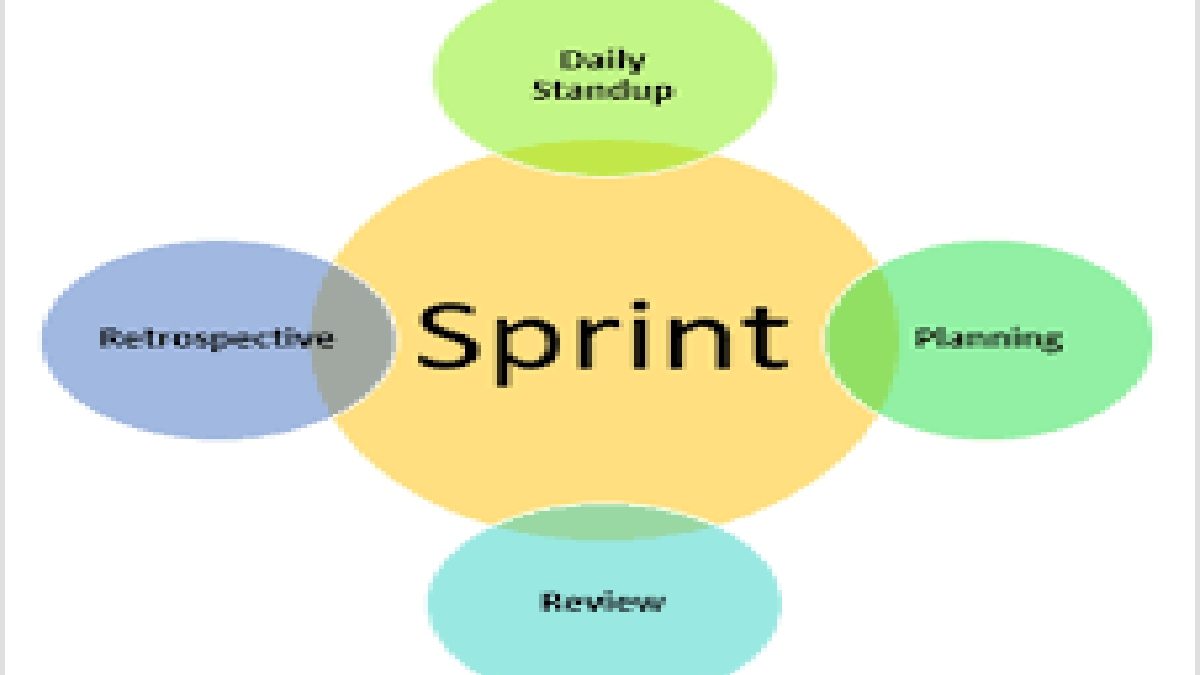Table of Contents
Introduction
Sprints are time-bound iterations of a continuous project development cycle: short, repeatable steps that last between one and four weeks. Sprints are at the core of Agile and Scrum methodologies, an approach that receipts large, complex invention development projects and breaks them down into smaller, more manageable chunks.
Each sprint has the following features:
- It maintains a constant period throughout the development effort.
- A new sprint starts immediately after the successful completion of the previous one.
- Sprint start and end dates are predefined.
We should probably take a moment to mention Agile and Scrum a little extra. Agile is a way of software development and project management that emphasizes teams sending work in small, regular increments. Scrum remains a subset of Agile, a framework dedicated to developing, delivering, and maintaining complex products, particularly in software development.
Based on the sprint definition, you can see how this process complements Agile and Scrum.
If you want to learn more about these two concepts, check out this Agile article, this Scrum article, and this Agile Scrum video tutorial.
Sprint Id Definition
Sprint duration is committed by the scrum master, team coordinator, and scrum framework manager. Traditionally, the sprint lasts 30 days. Once the team agrees on how many days to run, all future sprints should be the same.
After the race begins, the product owner must step back and allow the team to work. During the race, the group holds daily meetings to discuss progress and brainstorm solutions to challenges. The entrepreneur may attend these meetings as an observer but is not allowed to participate unless answering questions. (See pigs and chickens). The project owner may not submit requests for changes while sprinting, and only the scrum head or project manager has the power to intersect or stop the run.
At the close of the sprint, the team presents its work to the project owner, and the project owner uses the conditions established at the sprint planning meeting to accept or reject the work.
Sprint roles, antiques, and celebrations

A variety of roles are involved in the sprint, each employed on different parts of the process. These roles include:
Product Owner
This person characterizes the business or user-accessible and links the development team and customers. The product owner is responsible for employing the user group to determine, prioritize, and fine-tune the features in the product release. They also accept or reject the work results and keep clients informed of the status of the project.
Mr. Scrum:
This person is the primary facilitator of the project development team. Their primary focus is on transparency, control, and regulation. They run the process of how information is exchanged during the race, including leading stand-up meetings and helping the team stay on the way by interceding problems and removing obstacles.
Scrum Team
This group of people is answerable for carrying out the work. In addition to creators, the scrum team can include testers, architects, designers, and IT operations; In contrast, the scrum head is responsible for protecting the team and maintaining focus; the unit itself is self-managed and ultimately accountable for key how to collectively reach their goals.
Scrum vs. sprint
Scrum is the specific basis used under the Agile sunshade to develop complex goods. The term scrum is also used to call the daily standing meetings that take place during a sprint.
Sprints are periods of one calendar week to one month, during which a product manager, a scrum master, and scrum teamwork complete an exact product addition. During a race, work is done to create original features based on user stories and the backlog. Newsprint jumps immediately after the end of the current sprint.
What is the Agile Sprint Cycle?
An agile sprint cycle, or workflow, is an iterative process developers use to tackle a development project. A software project can take up to ten sprint cycles.
Although there is room for variation, the most significant sprint cycles break down like this:
planning
The team covers the highest priority user stories, deciding what Spring can and will deliver. This phase contains items found in the backlog. The team also decides on the precise tasks required to complete the cycle.
Booking
The backlog is a definitive list, agreed upon by the entire team, that defines what the development team will accomplish during the sprint. This backlog includes work and potential changes to the product.
Sprint
This part is the time frame in which the actual additional work should be completed and should not exceed 30 days. An ideal sprint lasts two weeks.
Daily Scrum
Scrum is a short daily meeting led through the Scrum Master, where the team talks about what assignments they are working on, what they have accomplished, and any problems or obstacles that are holding up the work.
Result
A sprint result is another way of saying a result, usually a hypothetical usable product. The Product Owner has the final decision to decide whether the product is ready or needs additional features.
Sprint End
At the end of the sprint cycle, the team gathers for two final meetings:
Sprint overview: The team shows the completed work to the creation owner, who ideally allows him to move forward.
Sprint Retrospective: The team talks about what you can do to improve the process in the future in the spirit of continuous improvement. Consider this a self-assessment.
Conclusion
Sprints are so popular (and practical!) that they are often considered the first step on the road to greater agility. As we’ve learned, mastering the Sprint requires mastering a handful of Scrum and Agile concepts that complement each other. Use the rest of our Scrum articles to grow your knowledge and get closer to Scrum happiness.
You can start on the right foot by planning your Sprint (and adding do’s and don’ts) with our Scrum template, which includes everything you need to plan, track and manage work in a sprint. Need to. Plus, learn how to use Sprint in Jira Software.
Also Read: Pragmatic marketing


